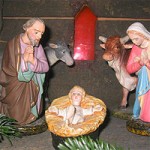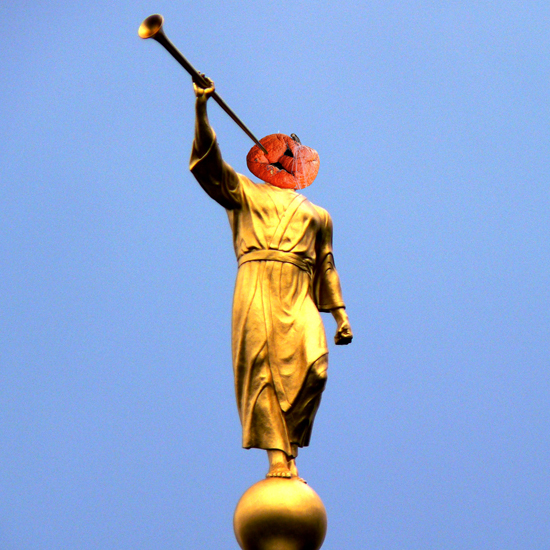One of the more bizarre practices among world religions occurs annually among a small group of devotees in Delhi, India.
At a designated time during the last few weeks of the year, and coinciding with the community’s most significant yearly festival, the members of this community come together to perform a ritual which commemorates their sacred history. The rite begins with prayers and hymns, after which, a sacred text is opened and a passage specifically associated with the founding myth of the community is read aloud.
During the reading, the children of the community are assembled to enact the myth. Dressed in homemade costumes, which vaguely suggest people of another time and place who surely did not resemble in any degree of plausibility their representation in this ritual, these young children are guided through their dramatization of the myth so that the story as it is read plays out in a kind of chess-board mime. At the conclusion of the reading, the children hold their carefully arranged places, so as to create a living painting reminiscent of one of the community’s most sacred moments.
Expressing awe and reverence, the community joins in additional hymns, which may extend well into the night. This ritual closes the gap between sacred history and the community’s present circumstances through a dramatic enactment of a scriptural narrative.
In simple terms, the children, playing the roles of the scriptural story, ‘bring the story to life’. And not just figuratively so. For devotees, the appearance of saints and saviors in the children of the play is a real appearance, and the story played out is a vision of the remembered event. Elder Anderson, a Mormon missionary in his late sixties, and a participant in this rite, as I witnessed it performed by a Mormon congregation in New Delhi in December, 2001—counseled the community that seeing this nativity play should make them feel they were there when Jesus was born.
We engage in all sorts of equally bizarre behavior in an attempt to make our sacred history alive and real now, in our waking days. Many of you sacrifice an afternoon every year rooting around in boxes to find the family ‘nativity scene’—a collection of icons representing god and saints, not at all unlike family shrines of so-called ‘pagan’ faiths—which then occupies a place of prominence in your home throughout the Christmas season. If the Christian nativity scene is not simply idol worship, then it is an attempt to make a historical circumstance present—a reality now, for us, as opposed to its irrelevant isolation in history.*
Other generations have been better, perhaps, at allowing the past and present to co-exist. A ninth century text from northern Europe titled The Heliand tells us a familiar story with a unique imprint. “Then there came a decree from Fort Rome,” it reads, “… sent to every king enthroned in his homeland and to all Caesar’s army commanders governing the people of any territory…. It stated that all the warrior heroes were to return to their assembly place, each one was to go back to the clan of which he was a family member by birth in a hill-fort… The good Joseph went also with his household… [to] the hill-fort at Bethlehem.”
The writer of The Heliand imagined the Jesus story as it would have happened in his own day, where chieftans and knights defended their clans from hostile feudal lords in hill-forts. One thing, at least, that we see in the retelling of the nativity story in this way is a conception of the story as always ongoing—not constrained or channeled by linear time, but happening always, and in the idiom most familiar and real to the immediate culture, so that Joseph is a knight, Bethlehem is a hill-fort, and Jesus is the chieftan of all mankind.
The long cycle dramas of medieval Europe, which dared to dramatize the entire Bible, did so without concern for historical accuracy in their manner of staging, not because medieval people knew nothing of history, but, partly, at least, because the medieval mind was eager to be all places and times at once. Dressing the wise men as knights and the shepherds as local pig-farmers in acting out the nativity story was, in medieval days, perfectly true, because the play did not seek to represent a by-gone day, but to present a living reality, as a truth as alive in medieval days as in year zero.
Happy Holy Days, Everyone, as we try to make all times now.
_________________________
*Our family has a a distinct preference for Playmobil’s version of the Christian nativity scene. Our set does include medieval knights on horseback.












